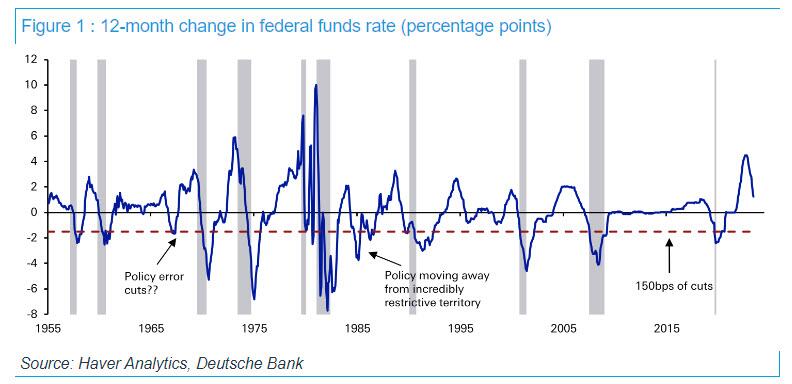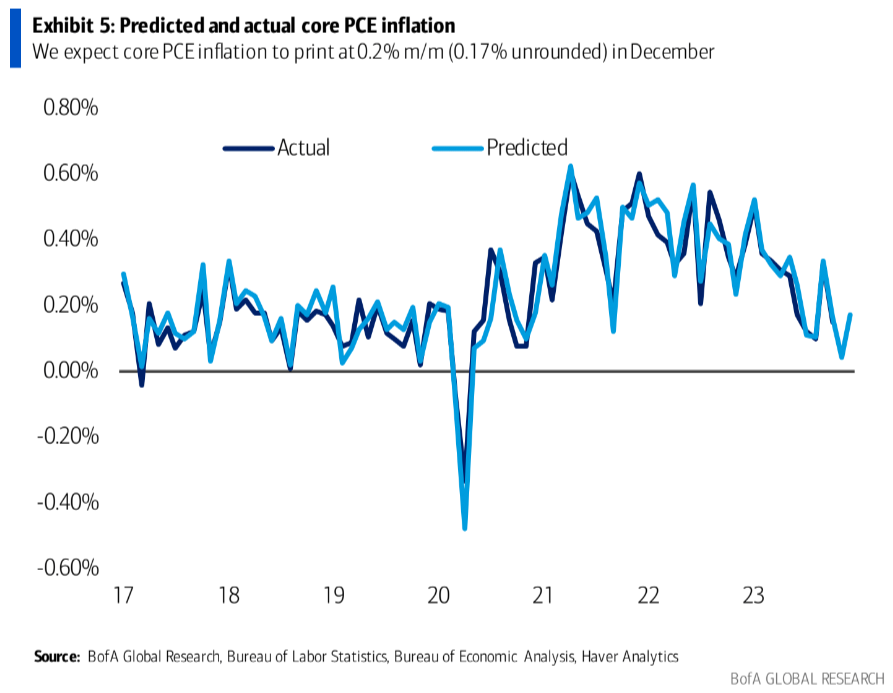US Fed fund futures are pricing seven rate cuts over the next year:

How is this possible? The PPI came in stone cold Friday and it is key input into PCE, the Fed’s favourite inflation gauge. BofA:
Based on today’s PPI report and yesterday’s CPI (Consumer Price Index) data, we expect core PCE inflation to print at a soft 0.2% m/m in December (0.17% unrounded,Exhibit 5).
We see risk that core PCE could round down to 0.1% m/m. Therefore, the wedge between core CPI and core PCE should persist.
If our forecast proves correct, then the six-month annualized rate of core PCE would remain at 1.9% while the 6-month annualized change in core CPI was 3.2% in December.
Moreover, the y/y rate would fall three-tenths to 2.9%.
Meanwhile, we expect headline PCE inflation to print at 0.15% m/m, barely rounding up to 0.2%, and for the y/y rate to hold at 2.6%.
Our expectations for December Core PCE support our call for the Fed to start its cutting cycle with a 25bp cut in March.

This is what saved markets from a Houthi bombing shock Friday night. And the muted reaction of oil.
The outlook for rates in Europe is even more dovish, and it is already raining easing in China and emerging markets.
The global easing is even starting to trickle down to Australia with two cuts priced into RBA futures for H2:

My view is there will be more cuts than that coming to Australia as the US slows down, Europe goes nowhere, China falls into its property black hole, the global economy skirts recession, global energy keeps on crashing, and the Aussie economy remains mired in per capita recession.

